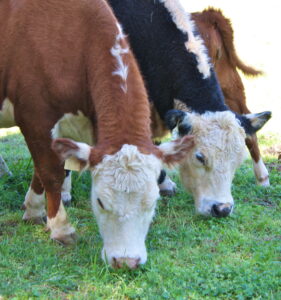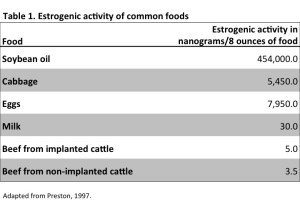What has two thumbs and wants to turn $2 into $50??? THIS GUY!
 If nothing else, I got you to stop and read this first sentence, or at least look at the figures. Implanting cattle is not a new technology, its been around for years. It has the potential to add 3-5% more pounds to your calf crop, yet fewer and fewer producers are employing the practice. WHY? Unfortunately, we as producers are faced with battling myths and urban legends about the food we provide. Although there is no science behind it, we are faced with the stigma of hormones in beef, and the resulting “natural beef” that many are producing to satisfy this concern. We figured now would be a good time to review what we know about implanting since we’re entering the time of year when winter/spring born calves are ready for this practice.
If nothing else, I got you to stop and read this first sentence, or at least look at the figures. Implanting cattle is not a new technology, its been around for years. It has the potential to add 3-5% more pounds to your calf crop, yet fewer and fewer producers are employing the practice. WHY? Unfortunately, we as producers are faced with battling myths and urban legends about the food we provide. Although there is no science behind it, we are faced with the stigma of hormones in beef, and the resulting “natural beef” that many are producing to satisfy this concern. We figured now would be a good time to review what we know about implanting since we’re entering the time of year when winter/spring born calves are ready for this practice.
What are implants? Implants are small pellets that contain a growth stimulant that is slowly released over a period of time. Implants work by increasing circulating levels of somatotropin and insulin-like growth-factor 1. These compounds are produced naturally by the animal and control mechanisms that regulate growth and feed efficiency. Implants are available for nursing calves, stocker calves and/or finishing cattle. Bulls calves intended for breeding stock and replacement heifers should not be implanted.
Do implants improve performance? The simple answer is “yes”. A summary of several research studies revealed that implanting steer calves only once improved daily gains by 0.10 pounds per day, and implanting twice (the second implant would be administered 70-100 days after the first) increased daily gains by 0.13 pounds per day when compared to calves receiving no implants. This resulted in an average response of 5.3% increase in gain of calves at weaning for one implant, and a 6.2% increase for two implants.
Does pay to implant? Again, the simple answer is “yes”. For example, assume an implanted calf on the cow gains and additional 5%. At weaning, a non-implanted calf would weigh 600 lb, so its implanted counterpart would weigh 630 lb. In today’s market, if we consider $2.00/lb value, that would add an extra $60 in value to that calf. All of this for an approximate input cost of less than $2 per head for the implant and the labor. Another way to look at it is that you would need to receive a $58+ premium for the non-implanted calf through a natural program to eliminate this technology.
Is it safe for the consumer? Once more, the simple answer is “yes”. The public concern is focused on the increased estrogenic activity caused by the consumption of beef from an implanted animal. First, there is no such thing as “hormone-free beef”. Hormones are present in all biogogical food sources, whether it’s animal or plant, implanted or not. Table 1 illustrates the estrogenic activity of common foods. This clearly shows the safety of this practice, as it applies to human health.
So hopefully this helps explain the benefits of utilizing implants in cattle. There are several available commercially, and a specific applicator is needed for this practice. For more information, and help utilizing implants, contact your local Extension office.
